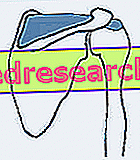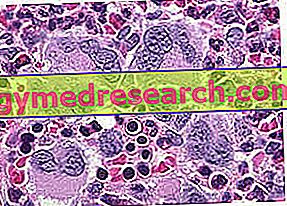Shoulder joint and its problems
The shoulder is an area of the human body that is extremely complicated because it is formed by the combination of 5 joints. Among these, the main one is called scapulomeral or glenomeral because it connects the head of the humerus with the glenoid cavity of the scapula. The set of these five joints, driven by numerous muscle groups (twenty-six muscles in all), makes the shoulder the most mobile "joint" in our body. All this mobility allows the execution of very complex movements but significantly reduces the stability of the entire region.
The shoulder joint is however protected by numerous anatomical stabilizing structures headed by the muscles and tendons that form the rotator cuff. The ligamentous and muscular apparatus over the years can however go against degenerative phenomena and only adequate physical activity can keep it efficient over time.
What in the past was erroneously called periarthritis of the shoulder (pain localized around the shoulder), is today considered as a group of various painful pathologies that can affect this delicate articulation. Among all these diseases the inflammation of the tendons that form the rotator cuff is undoubtedly the most frequent. It should also be considered that not all shoulder problems stem from this joint complex. A simple cervical osteoarthritis can in fact cause an irradiation of the pain also along the shoulder and the elbow.
Insights
Rotator cuff: anatomy and physiology Rotator cuff lesions: diagnosis Rotator cuff test Symptoms and first aid Treatment and rehabilitation Rotator cuff exercises Wound injury preventionRotator cuff: anatomy and physiology
The rotator cuff is a muscle-tendon complex consisting of the set of four muscles and their respective tendons:
on the upper side we find the tendon of the supraspinatus muscle, anteriorly that of the subscapularis muscle and posteriorly the tendons of the underpinned and small round muscles.
These muscles with their tonic contraction stabilize the shoulder preventing dislocation (the humeral head escaping from the glenoid cavity). The rather large tendons (about five centimeters) protect the entire joint forming a real cap that wraps around the upper part of the humerus.
 | OVERLAPPED or supraspinatus: with its action it abducts and rotates outside (extraterrost) the arm, in synergy with the action of the deltoid |
 | PAINTED OR INFRASPINED: with its action it externally rotates the arm and reinforces the capsule of the scapular humeral joint, stabilizing it. |
 | UNDISCOLLAR: with its action it gives and rotates inward the arm (intrarotatore) |
 | SMALL ROUND: With its action, synergistic with the infraspinatus, the arm rotates weakly towards the outside |
Rotator cuff injuries: symptoms, diagnosis
Among the four muscles that make up the rotator cuff, the supraspinatus is the one that most frequently injures itself. In reality, when we talk about the rupture of the rotator cuff we are not referring to lesions of muscular nature but tendon.
The type of wound can range from local tendon inflammation, without any permanent damage, to a partial or complete injury that may require surgical repair.
In both cases there will be a more or less marked deficit in the arm abduction force. In particular the subject will struggle to keep the arm raised laterally between 60 ° and 120 °. A special test to diagnose the lesion of the rotator cuff will test the patient's muscle response in these angles of movement.
Diagnostic tests - For further information: Functional evaluation of shoulder pathologies
HEADSET ROTATOR TEST: the patient raises his arm laterally by turning him inwards (so that his thumb is pointing downwards) and flexing him forward by 20-30 °. The doctor presses lightly on the arm pushing it down. If there is pain or significant loss of strength (compared to the contralateral healthy arm) the test is positive. The inability to keep the arm motionless below 120 ° (diagnostic sign called "falling arm" or JOBE sign) correlates to a complete tendon injury.
Although it is only able to diagnose a supraspinatus lesion, this test is called a rotator cuff test precisely because the tendon of this muscle is, among the four, the most frequently damaged.

If pain or an important lack of strength is present in the external rotation it could be a lesion of the infraspinatus (the second muscle that is most frequently damaged) or of the small round. The test in this case consists in having the arm rotate externally against resistance with the elbow resting on the side and flexed at 90 °. Useful information can be collected by comparing the strength of the two arms, if the suspected lesion affects only one shoulder.
To diagnose a lesion of the subscapular muscle tendon (the most important internal rotator of the proximal part of the arm) the "lit off" test shown in the figure is useful. The patient internally rotates the injured arm so that the back of the hand rests in the lower part of the back. At this point the patient is asked to move his hand away while the doctor presses lightly to prevent movement. Also in this case, if there is a significant drop in strength or pain in the movement, it is most likely in the presence of a lesion of the subscapularis muscle tendon.
The Neer conflict test, which consists in raising the arm 180 ° forward on the scapula (held firm by the doctor's hand) in complete internal rotation, is positive if the patient suffers shoulder pain in the final position (when the supraspinatus tendon impacts against the lower surface of the acromion).



